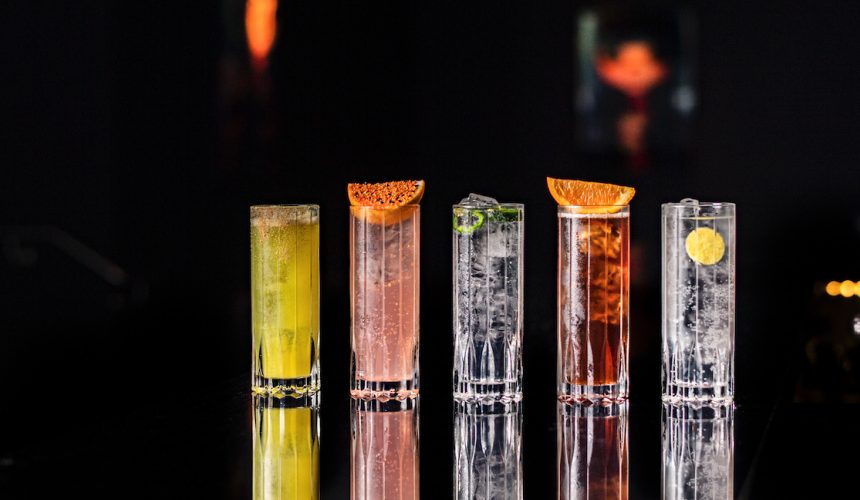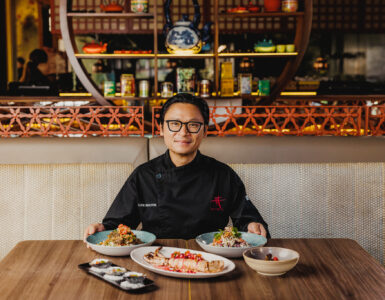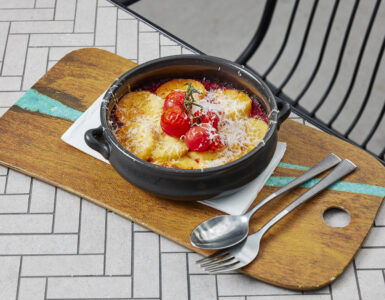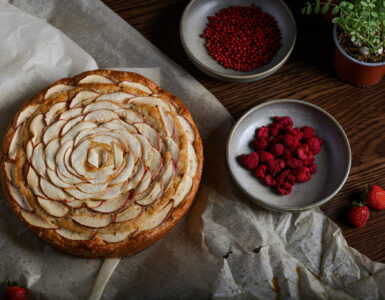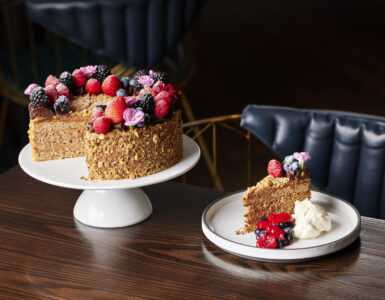The “chuhai” is a classic way to drink the Japanese spirit shochu in a tall glass. In partnership with Koyomi, Behzad Vaziri from Sokyo guides us through an array of variations on the classic.
The Sokyo Lounge prides itself on innovative cocktails, mixed with seasonal ingredients and made with a unique Japanese twist. So, it only made sense for Sokyo’s Bar Manager, Behzad Nzaviri to team up with Broadsheet and Koyomi Shochu to provide some inspiration on the best ways to mix up your Shochu Highball for summer. See the full article that appeared on Broadsheet below.

“You drink them earlier in the day, often prior to dinner,” says Behzad Vaziri, bars manager for The Star Entertainment Group, which includes the Star Sydney Japanese eatery Sokyo, of the shochu highball. “They’re not meant to be very alcoholic. Especially in summer, hydration is key.”
Vaziri is talking about the traditional shochu highball – called a chuhai.

Vaziri developed a taste for the nuances of shochu after starting at Sokyo six years ago. More popular than whisky in Japan, shochu is a clear, clean and versatile spirit that dates back to the 15th century. Alternately distilled from barley, rice, sweet potato, buckwheat or brown sugar, it’s often lower in alcohol than most other spirits. Some expressions, like the single-distilled Koyomi come in at 25% to deliver a crisp, subtle sweetness and notable fruity scent to the highball.
Vaziri says the shochu-based chuhai is a versatile drink that can be tweaked to suit nearly any dish. Koyomi Shochu is made from barley, fruitier and clearer than other type of Shochu. Koyomi Shochu will go perfectly well to make the Chu-Hi recipes suggested by Vaziri. Each is built in a glass simply by adding ice, shochu and then soda water, followed by the garnish and a gentle stir if desired. There’s not a lot of intimidating technique involved here, and you can tweak the individual components according to personal taste.
Here’s five variations of the chuhai to make at home.
Chu-Hi

Sokyo’s version of the shochu highball simply tops the most common barley shochu, such as Koyomi Shochu, with soda water and finishes it with a slice of lemon peel and a dash of house-made apple cider shrub to balance the acidity. “You keep the barley characters of shochu,” says Vaziri, calling the drink “minimalistic”. To make the shrub at home, just dice some fresh apples and preserve them in apple cider vinegar until it reaches your preferred sweetness.
Shochu and apple
Again using Koyomi Shochu, this version highlights freshly pressed apples – either green apples or Fuji apples, if in season. A rim of sansho (a very light Japanese white pepper), around the glass then brings an earthy element. “[With] Fuji apples being from Japan, it’s very appropriate,” says Vaziri. “It’s a refreshing tall glass of spirits and apple juice. It’s very common in our bars in Sydney.”

Shochu and coffee
Inspired by Australian coffee culture, this version adds Mr Black cold-drip coffee liqueur to a shot of Koyomi Shochu, a few drops of saline solution (or just water with salt dissolved into it) and swaps out the usual soda water for a dry tonic of your choice. “That barley base goes well with a light coffee flavour – nothing too intense – and a light tonic, so we don’t need to introduce a lot of sugar,” says Vaziri. “It’s a small amount of salt just to blend these flavours together. Again, it’s a savoury cocktail, to refresh the palate.

Shochu and grapefruit
A twist on the tequila-based Paloma, this variation sees just top a shot of Koyomi Shochu paired with a dry grapefruit soda (Vaziri suggests Fever Tree’s pink grapefruit soda) and agave nectar. Garnish with a grapefruit slice salted with shichimi (a seven-spice Japanese seasoning). “It’s a little more citrus-forward,” says Vaziri. “Then you add a touch of chilli salt to give it a little kick.”
Shochu and pepper
The most savoury of the five cocktails, this one features a sweet potato shochu infused with a small amount of green chilli and wasabi. At Sokyo, the bartenders use a syphon to carbonate the shochu itself, but you can just use a bit of soda water at home. Vaziri recommends serving it in a wine glass to capture the spicy aromas of chilli and wasabi, which you can also add individually rather than via infusion. “The sweet potato sweetness blends really well with the chilli,” he says, “almost like a pumpkin tempura.”

This article is produced by Broadsheet in partnership with Koyomi. 700ml Koyomi Shochu is available at leading liquor stores for $45 RRP and in a selection of bars and restaurants.
This article originally appeared on Broadsheet Sydney, you can find the original story here.

